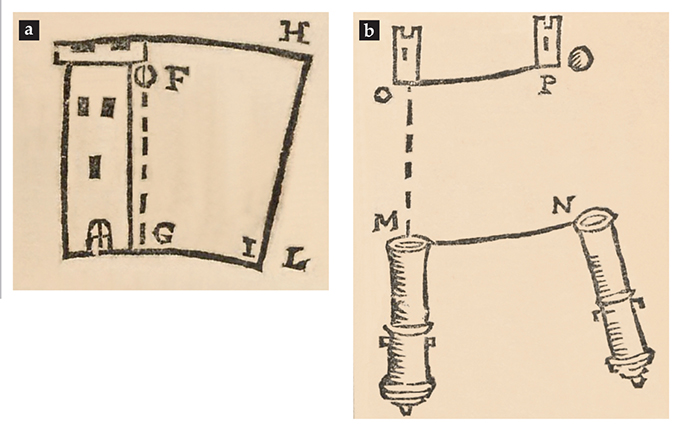Early descriptions of Coriolis effect
DOI: 10.1063/PT.3.3610
Earth’s rotation deflects projectiles and bodies in free fall. That phenomenon is called the Coriolis effect, after Gaspard-Gustave Coriolis (1792–1843), who described it mathematically in 1835. In a previous letter to Physics Today (August 2011, page 8
Riccioli’s work might be presumed to be a historical anomaly—an insight published and forgotten. However, I recently discovered another discussion of the Coriolis effect in a Jesuit work, again as an argument against Earth’s motion. It is in the 1674 Cursus seu Mundus Mathematicus of Claude François Milliet Dechales (1621–78). Dechales cited Riccioli repeatedly. In a section entitled “Objectiones contra Copernicum,” Dechales noted that the “common” objections to the Copernican motion of Earth all fail—for example, the objection that a rotating Earth will leave behind birds in flight. Dechales illustrated why by using the example of a ball released from the yardarm of a steadily moving ship: On account of common motion, the ball falls to the same spot as it does if the ship is at rest.
But then Dechales included panel a of the figure (below), a diagram of a tower on a rotating Earth, and asks his reader to consider the following (my translation):
A ball F, hanging from the top of a tower directly above point G, is dropped. While the ball descends, point G is carried [by Earth’s rotation] into I. The ball F is shown to be unable to arrive at point G (now at I). This is because the ball when positioned at F has a momentum [impetus] requisite for passing through arc FH (through which the tower top moves while the ball descends) which is greater than that requisite for arc GI. Therefore, if the ball is dropped, it will not arrive at point I, but will advance forward farther [to L].

Expected deflection, on a rotating Earth, of (a) a ball falling from a tower and (b) a projectile. Claude Dechales took the absence of detectable deflections as evidence for Earth’s immobility. (From anti-Copernican arguments in C. F. M. Dechales, Cursus seu Mundus Mathematicus, vol. 4, 1690, p. 328.)

Similarly, Dechales says to consider a cannon discharged toward one of Earth’s poles, as in panel b. The cannon is at M, its target is O. While the ball is in flight, the cannon is carried by Earth’s rotation from M to N, and the target from O to P. Because of that same rotation, the ball has momentum corresponding to the cannon’s motion from M to N—a motion greater than the target’s motion from O to P. The flying ball, he says, “conserves this momentum whole,” and therefore should outrun, and not hit, the target. He illustrates the ball passing to the right of the target. A rotating Earth should produce detectable effects.
Thus Riccioli was not an anomaly. What we now call the Coriolis effect was being described and illustrated by different authors a century before Coriolis was born. The twist to the story is that the effect was first described by Riccioli, and then by Dechales, as part of an anti-Copernican argument. Nonetheless, if we grant honor to firsts in science, it seems the “Coriolis” effect might be due for a renaming.
More about the Authors
Christopher M. Graney. (christopher.graney@kctcs.edu) Jefferson Community & Technical College, Louisville, Kentucky.
